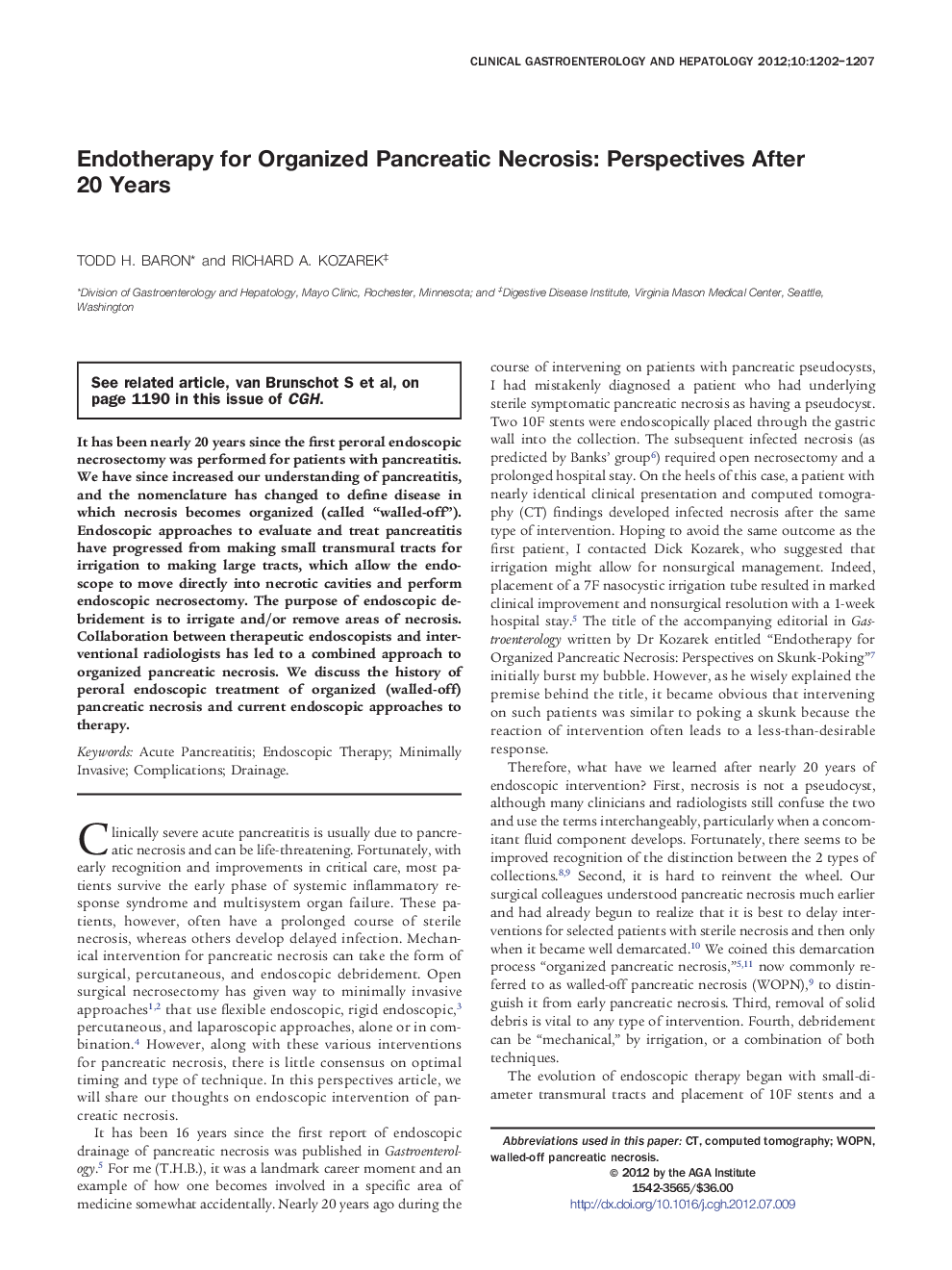| Article ID | Journal | Published Year | Pages | File Type |
|---|---|---|---|---|
| 3282887 | Clinical Gastroenterology and Hepatology | 2012 | 6 Pages |
Abstract
It has been nearly 20 years since the first peroral endoscopic necrosectomy was performed for patients with pancreatitis. We have since increased our understanding of pancreatitis, and the nomenclature has changed to define disease in which necrosis becomes organized (called “walled-off”). Endoscopic approaches to evaluate and treat pancreatitis have progressed from making small transmural tracts for irrigation to making large tracts, which allow the endoscope to move directly into necrotic cavities and perform endoscopic necrosectomy. The purpose of endoscopic debridement is to irrigate and/or remove areas of necrosis. Collaboration between therapeutic endoscopists and interventional radiologists has led to a combined approach to organized pancreatic necrosis. We discuss the history of peroral endoscopic treatment of organized (walled-off) pancreatic necrosis and current endoscopic approaches to therapy.
Keywords
Related Topics
Health Sciences
Medicine and Dentistry
Gastroenterology
Authors
Todd H. Baron, Richard A. Kozarek,
